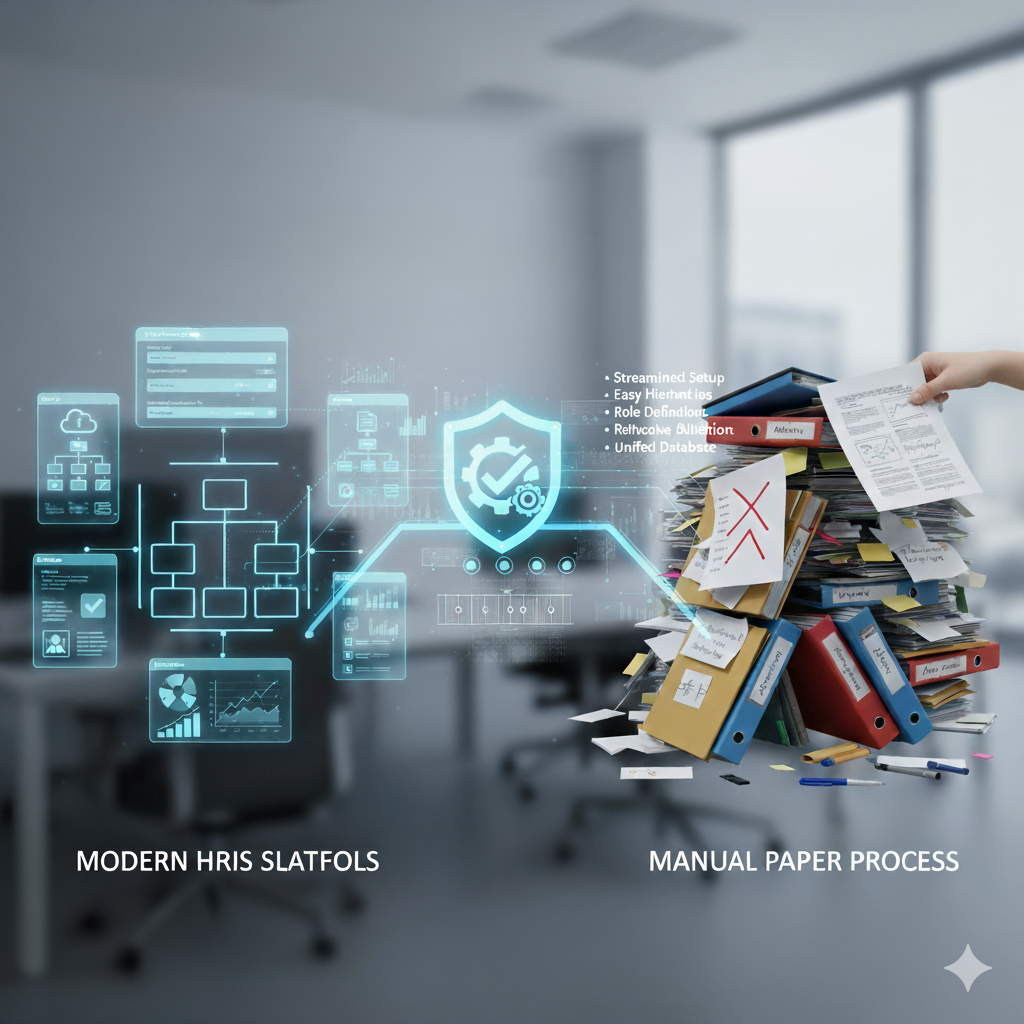Every successful organization depends on a clear and efficient department structure. Departments define reporting lines, streamline workflows, and ensure accountability. But in many companies, managing departments manually — through spreadsheets, documents, or disconnected systems — often leads to confusion, duplicated data, and administrative inefficiency.
That’s where Human Resource Information Systems (HRIS) come in. With modern HR tools, HR professionals can now create, organize, and manage departments digitally, ensuring accuracy, transparency, and real-time updates across the organization.
The Importance of Department Structure in HR Management
Departments aren’t just labels — they are the backbone of organizational clarity. Each department has its own:
- Roles and responsibilities
- Managers and reporting hierarchies
- Budget allocations
- Performance and attendance metrics
Without a properly managed department structure, HR teams face challenges like inconsistent data, payroll errors, and miscommunication across teams.
That’s why having a centralized HRIS system to manage departments is a game-changer for modern businesses.
Create Departments in Just a Few Clicks
With HRIS tools, setting up new departments no longer requires complex administrative steps.
HR personnel can:
- Add a new department instantly through the system dashboard
- Assign department heads or supervisors
- Define reporting lines and member roles
- Set department codes or identifiers for payroll and analytics
This quick and structured process eliminates the need for manual forms or separate spreadsheets.
Centralized Organizational Structure
A key feature of HRIS systems is the Organizational Chart — a visual representation of the company’s structure.
Once departments are created, they automatically appear in the hierarchy, showing:
- Department names
- Reporting relationships
- Employee count per department
- Key managerial positions
This visual clarity helps HR, management, and employees understand the entire company structure in one glance.
Seamless Integration with Other HR Functions
Modern HRIS tools don’t just create departments — they integrate them with other HR modules such as:
- Payroll: Assign pay rules or allowances per department.
- Attendance: Monitor attendance or leave patterns by department.
- Performance Management: Track department-level KPIs and evaluations.
- Recruitment: Align job postings or manpower requests with the right department.
This seamless integration ensures that every department-related decision flows automatically across all HR processes.
Maintain Data Accuracy and Consistency
One of the biggest advantages of HRIS-driven department management is data consistency.
When you make a change — like renaming a department or assigning a new head — the update automatically reflects across all connected modules.
No more manual edits in multiple systems. This guarantees:
- Up-to-date organizational data
- Fewer administrative errors
- Consistent records across payroll, attendance, and performance systems
Real-Time Reporting and Analytics
HRIS platforms often include reporting dashboards that provide instant insights into departmental performance.
You can generate reports such as:
- Employee distribution by department
- Overtime and attendance summaries
- Department-level turnover rates
- Performance comparisons across departments
These analytics empower HR leaders to make data-driven decisions and identify areas that need improvement.
Simplify Department Transfers and Mergers
In growing companies, departments frequently evolve — employees move, roles change, and divisions merge.
With HRIS tools, HR teams can manage these transitions effortlessly by:
- Reassigning employees to new departments
- Merging or splitting departments digitally
- Updating reporting lines without disrupting daily operations
Everything remains traceable and organized, ensuring compliance and accountability.
Enhanced Transparency and Employee Self-Service
Many HRIS systems feature employee self-service portals, allowing team members to view their department information, supervisor details, and reporting hierarchy.
This transparency:
- Improves communication
- Reduces repetitive HR inquiries
- Helps employees better understand their role within the organization
Scalable for Organizational Growth
As businesses grow, so does their departmental structure. A robust HRIS system scales effortlessly, allowing you to:
- Add new departments as you expand
- Manage multiple branches or divisions
- Integrate future systems or modules seamlessly
This scalability ensures your HR system evolves with your company — without data loss or workflow disruption.
Compliance and Audit Readiness
With all department-related data stored digitally, HRIS systems help ensure compliance with labor and corporate governance standards.
During audits, HR can easily export structured reports showing:
- Department creation history
- Employee assignments
- Approval workflows
This makes audits faster, more accurate, and stress-free.
Conclusion
In today’s digital-driven workplace, relying on manual processes to manage departments is inefficient and error-prone.
A modern HRIS system gives you the tools to:
- Create and manage departments instantly
- Integrate data across HR functions
- Maintain accuracy and compliance
- Access real-time insights for better decision-making
By organizing smarter through HRIS tools, your company achieves not only operational efficiency but also a stronger foundation for employee engagement and growth.

